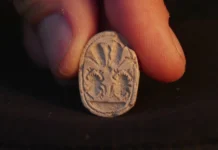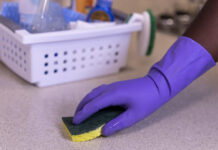 Arthur Ashkin, of Rumson, was awarded half the $1.01 million prize; the other half is shared by Gerard Mourou of France and Canadian Donna Strickland.
Arthur Ashkin, of Rumson, was awarded half the $1.01 million prize; the other half is shared by Gerard Mourou of France and Canadian Donna Strickland.
Ashkin is the oldest person ever named as a laureate for any of the prestigious awards. Ashkin is six years older than Leonid Hurwicz was when he won the economics prize in 2007. The economics winner in 2012, Lloyd Shapley, was 89.
Sweden’s Royal Academy of Sciences, which chose the winners, said Ashkin developed “optical tweezers” that can grab tiny particles such as viruses without damaging them.
Arthur Ashkin—considered by many to be the father of optical trapping—is one of the giants of laser science. In a remarkable career at Bell Labs that spanned four decades, Ashkin figured how to make lasers push, pull, and hold onto tiny objects such as small dielectric particles, cells, and biological molecules like DNA. In his most famous experiment, Ashkin, along with Steve Chu and other collaborators, cooled and trapped individual atoms using only light.
Ashkin was born in 1922 and grew up in Brooklyn, New York. For college he went to Columbia University, where he began working as a technician building magnetrons for the US military’s radar devices. During his sophomore year he was drafted into World War II, but his supervisor Sid Millman made a phone call and got Ashkin placed in the “enlisted reserves,” allowing Ashkin to continue working in the lab throughout the rest of the war.
After the war Ashkin went to Cornell on the advice of his brother, a nuclear physicist who had worked on the Manhattan Project with Richard Feynman and Hans Bethe, both of whom were at Cornell. Ashkin studied nuclear physics as well, but eventually decided not to go into that field because his brother was already too well known. “I was known as ‘Ashkin’s brother Ashkin,'” he says.
Meanwhile, Millman had moved to Bell Labs, the great bastion of basic science research where the maser—the precursor to the laser—was invented in 1958. After finishing his PhD, Ashkin got an invitation from Millman, and in 1952 he started working at the lab in Murray Hill, New Jersey, studying microwaves. In 1961 he switched to lasers, and began working on parametric oscillators, and nonlinear proprties of optical fibers.
However, Ashkin’s greatest achievements were to come in the study of radiation pressure—the idea that light and other forms of radiation can exert a force on objects. At Holmdel, another Bell Labs facility where he moved in 1967, he discovered he could push small (micron-sized) latex spheres through water using a laser beam. He also found that the spheres were pulled from the fringes of the beam to the center, facilitating trapping.
Ashkin then focused a second beam on the spheres from the opposite side. The two beams held the spheres in place all by themselves, forming the first optical trap. Ashkin published his results in Physical Review Letters in 1970.
Ashkin’s dream was to trap atoms, but he encountered difficulty in getting the atoms cold enough to hold onto them for any length of time. In 1975, Theodor Hänsch and Arthur Schawlow provided a key insight by proposing that atoms could be cooled using the well-known Doppler effect, which is also used in police radar, storm tracking, and determining the distances to faraway objects in the universe. This technique is known as “optical molasses.” John Hall and colleagues the University of Colorado at Boulder developed important techiques for implementing this idea.
Armed with these new techniques, Ashkin, his new colleague Steve Chu, and others at the lab began an experiment in 1984 to cool and trap a group of atoms. Chu proposed an initial experiment to study the optical molasses cooling scheme, before trying to trap atoms. The group succeeded in holding a group of 500 sodium atoms cooled to 300 microKelvin for a period of several seconds. They then conducted another experiment in which they trapped the cooled atoms using an “optical tweezers” trap, in which a single laser beam is focused through a lens. The group published their results in an article in Physical Review Letters in 1986, which included the first color photographs every published in this journal. This was the world’s first stable, three-dimensional, fully optical atom trap (Bill Phillips and colleagues at the National Bureau of Standards [now the National Institute of Standards and Technology] in Gaithersburg, Maryland had shortly before succeeded in trapping atoms magnetically, but at much lower densities).
Chu went on to use cooled atoms to create an “atomic fountain” that was used to greatly increase the accuracy of atomic clocks and the experimental measurement of acceleration due to gravity, and eventually won the Nobel Prize, along with Phillips and the theorist Claude Cohen-Tannoudji, for this work. Optical trapping also contributed to the Nobel shared by Eric Cornell, Wolfgang Ketterle, and Carl Wieman in 2001 for producing and studying Bose-Einstein condensation.
Ashkin, meanwhile, focused on using optical tweezers to trap and study various living things, including the tobacco mosaic virus, various bacteria, red blood cells, and algea, without damaging them. He went on to probe the internal cell structure, using his tweezers to manipulate the cell’s cytoplasm and organelles in what he describes as “a form of internal cell surgery.”
The optical tweezers technique Ashkin developed has led to an explosion of biophysical research yielding more and more precise measurements and manipulations of tiny biological systems. Researchers have studied the motion of the molecular motors that are responsible for intra-cell transport, and observed the motion of RNA molecules on a DNA template, at resolutions of less than one nanometer—hundreds of times better than what is achievable with a light microscope. Other groups have used optical tweezers to measure the mechanical properties of intracellular components such as microtubules and actin filaments, discover new species, and study how infectious disease organisms attack healthy cells. “I think there may be a Nobel Prize awarded in biology for the great work being done with optical tweezers,” says Ashkin. A review article he wrote in 1997 describes much of this work. Ashkin also wrote a book called Optical Trapping and Manipulation of Neutral Particles Using Lasers.
Arthur Ashkin retired from Bell Labs in 1992, but he remains active in his home laboratory, which is furnished with some of the same equipment he used during his long, productive career. He has won a long list of prizes and honors, and he is a fellow of OSA, APS, IEEE, and AAAS. In 2009 he was awarded an honorary membership to the Optical Society, described as “a designation reserved for an elite group of individuals who are genuine visionaries in the optics and photonics community.” He holds 47 patents and has just filed applications for two more, based on devices he has designed to harness solar energy. Musing on the nature of scientific insight, he says, “H


























